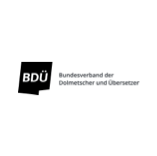
Agency for international project management of online projects
- Planning and coordination of international online projects
- Centrally controlled projects with international experts and teams
- Experts for International project management
As Agency for international project management we support your company in structuring and coordinating online projects such as websites, online stores or apps. Tasks, deadlines, resources, budgets and team members are realized by our project management Centrally managed and controlled. Taking into account the local requirements of your target markets, we accompany your internationalization on the road to success.
"International online projects can be easily managed centrally with an ideally managed project management system. The initiation, planning, steering and controlling of experts and internationally active teams is managed in an orderly manner."
International project management of online projects
What can qwp do for your international project management?
What is meant by international project management?
Project management is the basis for realistic implementation, especially when a company is planning to internationalize. The focus here is on the planning, management, implementation, organization and control of an international project, which can be ensured by a project manager or an agency. Different methods can be used, which should be geared towards the company structures and the teams involved. In international online projects, it is very important to bring together all internal and external resources in the form of technology, expertise and people. Multilingualism and many years of experience are particularly valuable in this context. As an agency for international project management, qwp brings these requirements to a collaboration.
Why is project management so important in internationalization?
Every single employee involved in the project, whether external or internal, makes a valuable contribution to its implementation. Without project management, these employees would only provide a piece of the puzzle for success without clear objectives and deadlines, which may not become a whole. Realizing an international project without project management is like a ship without a rudder. Only the planning and conception, the clear distribution of tasks, the ongoing communication, the problem management, the time schedules and finally the success control by the responsible project manager or by the agency in charge guarantee the successful implementation of an international online project. With qwp, you can limit risks and achieve your project goals within the planned time and budget.
Project management in phases
What are the phases of international project management?
PHASE 1
Concept
- Project analysis in an international context
- Target definition
- Agreement on deadline and cost targets
- Risk analysis
- Analysis of existing resources
- Project organization & rough planning
PHASE 2
Planning
- Appointment of project management and teams
- Detailed planning
- Subdivision into subprojects
- Definition of areas of responsibility
- Precise planning of resources
- Preparation of the exact cost plan
PHASE 3
Realization
- Permanent control of the project
- Risk management
- Documentation on the progress of the project
- Team development
- Reporting
PHASE 4
Conclusion
- Final acceptance of the project
- Analysis of the project process
- Optimization of the process for future projects
Tasks in international project management
Services & tasks in project management
Which services must be combined in international project management?
The variety of tasks and services involved in implementing international projects presents many companies with insurmountable challenges that even a recruitment offensive (international staffing) could not solve. Services such as brand development, social media marketing, content marketing, email marketing, search engine optimization and marketing, website hosting and development, analytics and monitoring, press and public relations, crisis communication, website creation, video creation and editing or graphic design can all be part of a project that aims to successfully establish itself on international markets. What internal Human Resources is not available, must be added externally at a high level. With well-structured project management, internal and external teams (services) can be brought together, managed and controlled in a targeted manner.
What tasks does international project management involve?
The tasks in project management are based on the desired objective. Core requirements include budget planning, staffing teams and appointing responsible persons, scheduling a project, preparing cost estimates and offers, organizing communication within the team and the project, planning and conducting meetings, constantly monitoring all processes and monitoring deadlines, reporting to the company, assessing potential risks and solving problems accordingly as well as reviewing project results. This challenge can be met by a well-trained project manager. Alternatively, it is worth hiring an agency that has the personnel resources and knowledge of international markets to guide the project with expertise.
Classic & agile project management methods
Advantages and disadvantages of classic and agile project management methods
Classic project management
- proves to be particularly effective when requirements, resources and deadlines are known and clearly defined
- Integrated planning implementation
- Stable and long-term planning
- Delegative management style with clear personnel structures
- Top-down communication
- Unsuitable for open projects
- innovative products or services are rarely considered
- Personnel structures can cause problems
Agile project management
- Agile methods are more successful than classic
- Lean processes that are designed to be iterative
- High proportion of research
- High degree of personal responsibility
- Driven by vision
- Objective does not have to be clearly definable
- Self-organized bottom-up communication
- No firmly planned process
- Time and budget planning must be broadened
- Repetition or renewal necessary due to errors
- High demands on risk management
METHOD 1
Waterfall method: The aim is to implement projects in successive phases. Requirements, processes and services are clearly defined in the waterfall method and leave little room for changes or new ideas.
Scrum: In order to increase communication, teamwork and development speed, teams should fulfill their goals in a self-managing manner. Scrum Master and Product Owner are responsible. (Optimal for product development).
METHOD 2
V-model: It is based on two phases - the planning phase and the test phase, which are compared to gain knowledge. (Suitable for software development).
Design Thinking: Based on problem solving and brainstorming by interdisciplinary teams who complete their projects in several steps in a target-oriented manner.
METHOD 3
PRINCE2: The name stands for Projects in controlled environments. PRINCE2 provides a structured framework for projects with specific recommendations for action for each project phase.
Kanban: Project processes should be optimized in terms of costs and losses without losing productivity. The Kanban board visualizes the processes and creates a workflow.
METHOD 4
Simultaneous engineering: Here, the development process is not linear, but runs in parallel ("simultaneous"). This can speed up the process if control and communication between the teams is guaranteed.
Lean Project Management: Aims to minimize unnecessary costs. Missing added value, unbalanced processes and uneven workloads are to be avoided by the method.
METHOD 5
Six Sigma: Based on a mathematical approach to optimize processes. Anomalies and dependencies should be better identified and driven forward through effective optimization management.
Lean Startup: The aim is to create lean processes in order to optimize a start-up phase or market entry through iterative feedback gathering and customer-centric testing.
Jira & Confluence
What are Jira and Confluence?
How can Jira be used for international project management?
Jira is a tool developed by the Australian company Atlassian to support agile project management with useful functions. Scrum Boards and Kanban Boards are available within the software, which can be used by different teams and managed centrally. Thanks to the clear status reports, the current status of a project can be viewed and tracked at any time. By assigning tasks to teams and members, international project management is clearly mapped and thus taken to a higher level. Real-time performance reports help to identify emerging problems at an early stage and initiate appropriate countermeasures. By assigning different rights, administrators or the project manager can precisely define the areas of responsibility. Thanks to plug-ins, additional functions can be integrated and adapted precisely to a company's requirements. All in all, the use of Jira promotes transparency, flexibility and the flow of information within a project. The tool is free of charge for a small number of users; for larger projects, it is worth investing in the premium version.
How can Confluence be used for international project management?
Confluence also comes from Atlassian and is defined as wiki software that companies can use primarily to create documentation. The tool can be used as part of international online projects to communicate tasks and their descriptions, for document management or even as an intranet for knowledge management. For project management, Confluence can be combined with Jira, making work on a project even more transparent. By using online comments and mentions, the upload and download of documents, templates and templates for content and the assignment of roles and rights, Confluence supports project work in many ways. Thanks to its multilingualism, the tool provides valuable support for teams and employees working together on international projects. The cost of Confluence is based on the number of users.
Requirements management with Jira & Confluence
Structures for requirements management with Jira & Confluence
- Jira and Confluence must Creating and managing requirements over the entire duration of the project.
- The Documentation of changes and dependencies is visible and traceable for everyone within the tools.
- The Central communication of all persons involved in the project is realized via the software tools.
- In Confluence in combination with Jira, the Definition of the processes undertaken and their Progress monitored.
- The use of the tools allows a Decentralized working with clearly assigned roles and responsibilities.
- Jira and Confluence enable the Definition of cycles (sprints)which can be processed in parallel or in sequence.
- With both software tools, the documentation can be used to Processes optimized and risks minimized.
International web projects
Special features of digital projects
Are there local differences and differentiated customer behavior in international projects?
The challenge with international web and app projects is to precisely analyze the target market. Entering a market on the basis of experience from the domestic market can have devastating consequences for your own product or service. The basis for this is a comprehensive target group analysis. This results in a company and customer approach geared to the market. As purchasing behavior can also vary from country to country, experience from comparable projects and sectors can be used. On the other hand, new data can be collected and evaluated, e.g. through user tests. The recommended approach for analyzing the target market depends on the company in question, the product or service and, of course, the local characteristics of the market. For example, an in-depth analysis may be useful for Asian and African markets, which is not necessary for neighboring European countries.
Use of native speakers and local experts
The most common source of error with international website and app rollouts is the lack of native speakers and local experts. Many companies assume that knowledge of a language is sufficient to align a web project to a new target market. Incorrect terminology is quickly used in the translation. On vacation, a strange translation on a menu or when withdrawing money from an ATM often causes amusement. When shopping online, however, an incorrect or misleading translation can irritate potential customers and prevent conversions and purchases. Local language usage with all its particularities can only be represented by a native speaker. Local experts who have extensive knowledge of the target market can provide valuable input and insights that drive successful internationalization. The combination of in-house expertise and external knowledge guarantees a successful project with which everyone is satisfied in the end.
Building international teams
Central control and management of international teams
- For international projects, qwp relies on absolute experts in their area of responsibility. Many years of experience and demonstrably successful projects is a prerequisite.
- After defining the target market, we are supported by local experts at the Target group analysis and the first steps in project management.
- In the linguistic realization, we attach great importance to the Work by native speakersin order to local requirements to do justice to them.
- In cooperation with local experts and native speakers, we develop a customized Target market-oriented customer approach.
- In the course of the project, we involve experts from project management, search engine optimization, search engine marketing, content marketing, software development and web design. The Management and control of the international teams is managed centrally through the use of suitable software. Thanks to efficient, web-based tools, international teams can be managed centrally.
Tips & Best Practice
Tips for international project management
Tips for international collaboration in project management
The project manager has a key role to play in internationalization. With competence, flexibility and a high level of understanding for cultural differences, they must fulfill their leadership role. They must pay particular attention to the initial phase in which the processes are set up. Even managing a project team at just one location is not always easy for project managers. It becomes even more difficult when team members from different countries and time zones and with completely different cultural backgrounds come together. Leading an international project team effectively is a challenge for the project manager, but it also offers many advantages. For example, different time zones open up the opportunity to work on the project around the clock and thus increase effectiveness. Of course, this requires good communication and a transparent flow of information. When putting together the teams, the project manager must develop a feeling for what will move the project forward most quickly.
Best practice for international cooperation in project management
Our experience from various international and interdisciplinary projects has shown that there are best practice methods for project management. For example, comprehensive communication with everyone involved in the project has proven its worth. In regular virtual team meetings, not only is the current status of work discussed, but potential risks can also be ruled out at an early stage. An important learning from previous projects was that everything should be recorded in writing. This is primarily for control purposes, but also to ensure that actions and steps can be traced. A high degree of flexibility is required in agile project management if time, resources and budget need to be adjusted. Concluding the project with a review and evaluation should be in the interests of everyone involved.
These customers trust qwp










All trademarks, logos, and brand names are the property of their respective owners.
FAQ
Frequently asked questions
What are the central tasks in international project management?
What methods can be used in project management?
Why should companies rely on Jira and Confluence for agile project management?
What are the best practices in international project management?
GET IN TOUCH
International project management by qwp

We at qwp support you in the realization of your projects with our many years of experience as an agency in the field of project management. We put together international teams that guarantee rapid implementation at a high level.
Contact: Michael Quast, Managing Director
Phone: +49 30 48496622-0
E-Mail: contact@qwp.de